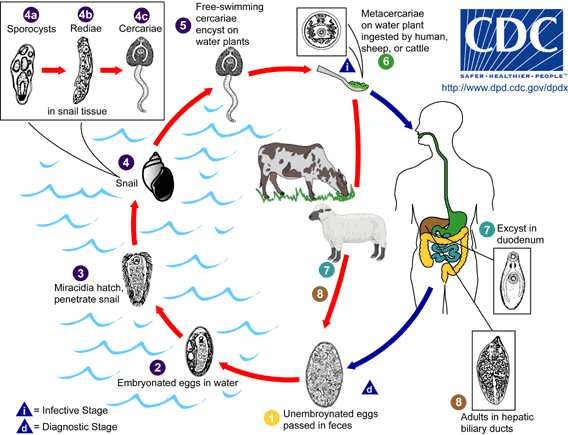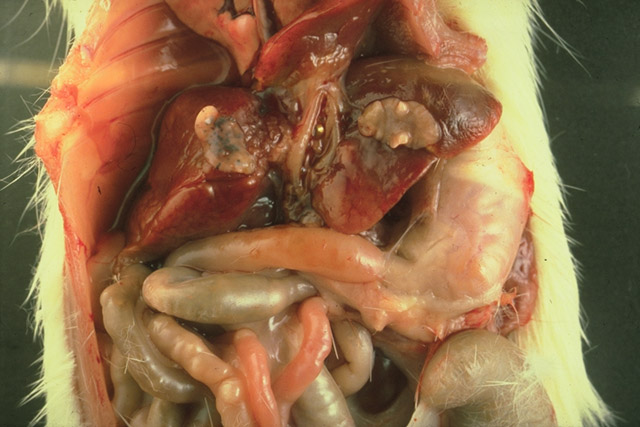Introduction to Diagnostic Medical Parasitology
Essentials
Fascioliasis is a liver disease of animals (sheep, cattle and other herbivores, but also dogs) and less frequently of humans. It is caused by the large trematode Fasciola hepatica. The adult flukes live in the bile duct.

Undeveloped eggs are passed with the faeces. After development the miracidium hatches in freshwater and has to find its suitable intermediate host, an amphibious snail where development and multiplication occur. Cercariae leave the snail and encyst on wet grass or aquatic plants, such as watercress. The final host is infected by eating uncooked plants with metacercariae.


Epidemiology
- Fascioliasis has a worldwide distribution. It is more common in sheep-raising countries
- Infection is acquired by eating uncooked aquatic plants with attached metacercariae
- Many animals (mainly herbivores) are reservoir hosts
- Mainly single human cases and some epidemics have been reported in the past (largely due to a meal with watercress)

Pathology
- Pathology is correlated with the worm load; light infections cause no pathology
- Liver damage (in rare cases of heavy infections) is due to the migration of young flukes across the liver and to the adult worms living in the bile ducts
Clinical Findings
- Most infections are without symptoms; however, liver function abnormalities can be found
- During the acute stage of infection (when flukes migrate from the intestine to the liver), one might observe fever, headache, nausea, vomiting, right upper quadrant and epigastric pain
- In chronic infections, additional signs might be hepatomegaly and jaundice

Diagnosis
Diagnostic methods
Parasitological methods
Diagnosis is based on finding eggs in stools or in bile aspirated from the duodenum.
Passage of eggs can be detected temporarily after a meal with infected liver!
The diagnosis can be confined by serodiagnostic tests when available.
Molecular diagnosis
A PCR-RFLP assay has been developed for the distinction between F. hepatica and F. gigantica.
Antigen detection
No tests developed so far
Antibody detection
The newer serological assays (mainly ELISA formats) use recombinant or purified antigen (e.g. cathepsin L1)
Diagnostic strategies
To confirm the small number of human cases (in an outbreak), the optimal diagnostic strategy relies on (repeated) stool examinations combined with serology

Prevention and control
- Individual prevention (avoid eating uncooked wild plants)
- Production of safe watercress (preventing contacts with intermediate hosts)